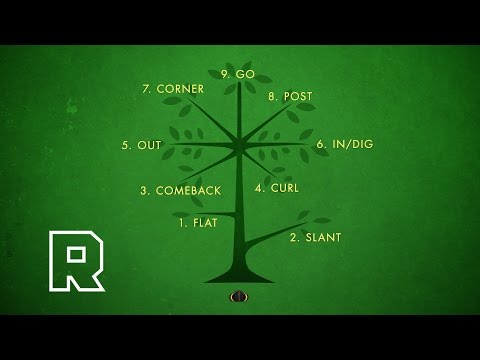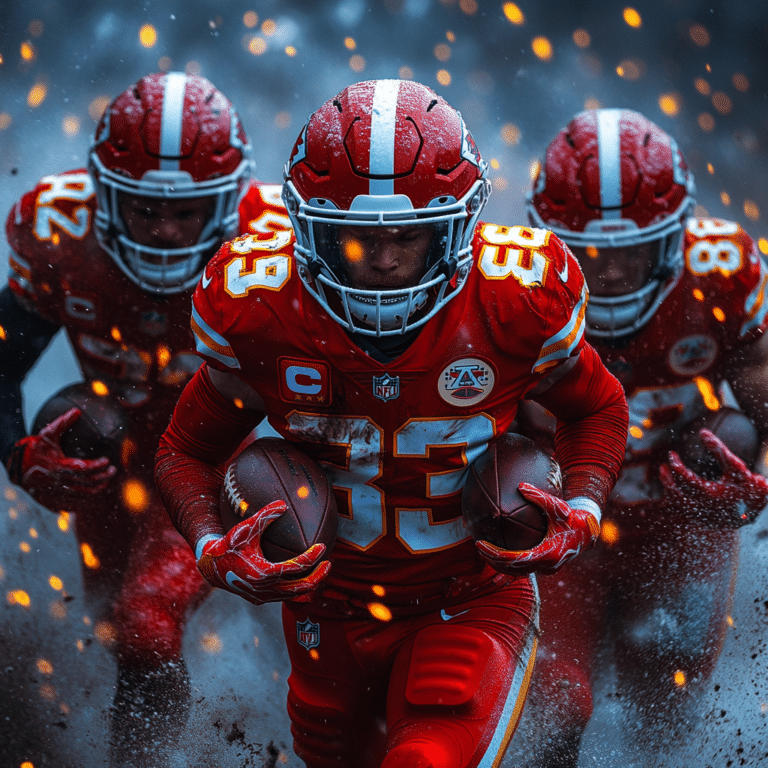Understanding the intricacies of football involves diving into the sophisticated nuances of its plays. One of the most enigmatic yet crucial elements is the route tree. This article will peel back the layers of the route tree, revealing its complexities and strategic importance in modern football.

The Anatomy of a Route Tree
To grasp the profound significance of the route tree in football, we need to dissect its components. At its core, the route tree is a visual representation of all the potential paths a receiver might take after the snap. These routes come with specific names and numbers, designed to create a roadmap for varied offensive strategies.
Key Routes and Their Impact

The Strategy Behind the Route Tree
The route tree is more than a playbook; it’s a strategy tool that coaches and quarterbacks use to craft winning plays. Combining certain routes can stretch defenses horizontally and vertically, creating mismatches and opening opportunities.
Integrating the Route Tree into Game Plans
Incorporating the route tree into game plans requires an in-depth understanding of defensive schemes and player matchups. Offensive coordinators like Andy Reid excel in utilizing route trees to exploit weaknesses in the secondary, demonstrating how intricate yet effective these strategies can be.

| Route Name | Route Number | Description | Typical Usage | Key Benefits |
| Flat | 0 | A short, quick route towards the sideline. | Short yardage situations | Quick gain, minimizes risk of loss |
| Slant | 1 | A quick, diagonal cut angled towards the middle of the field. | Inside passing play | Quick release, hard to defend |
| Quick Out | 2 | A sharp, quick route towards the sideline after a few steps forward. | Short, quick passes | Beats tight coverage, sideline protection |
| Comeback | 3 | Receiver runs deep then abruptly ‘comes back’ towards the quarterback. | Third down conversions | Hard for cornerbacks to defend |
| Curl | 4 | Receiver runs downfield then turns back towards the quarterback, forming a curl pattern. | Variety of game situations | Creates separation, versatile |
| Out | 5 | Receiver runs straight then cuts outwards towards the sideline at a sharp angle. | Intermediate passing plays | Effective against zone defenses |
| Dig (In) | 6 | Receiver runs downfield then makes a sharp cut towards the middle of the field. | Middle-of-field passes | Finds soft spot in zone defense |
| Corner (Flag) | 7 | Receiver runs downfield then angles towards the sideline/end zone at a diagonal angle. | End zone and deep routes | High reward play, stretches defense |
| Post | 8 | Receiver runs downfield then angles towards the middle of the field, aiming for the goal post. | Deep passes, end zone plays | Exploits deep coverage gaps |
| Fly (Go) | 9 | Receiver runs straight downfield aiming for maximum yardage. | Hail Mary, deep threat plays | Maximizes yardage, creates scoring chances |
Advanced Analysis: The Role of Data and Analytics in Route Design
Modern football has embraced analytics, and the route tree is no exception. Teams utilize data to refine route effectiveness based on defensive tendencies and player performance metrics.
Data-Driven Route Optimizations

Real-Life Applications: Case Studies
To truly understand the power of the route tree, we delve into case studies highlighting its successful application in the NFL.
Case Study 1: Kansas City Chiefs’ Playoff Triumphs
The Chiefs’ explosive offense under Patrick Mahomes exemplifies route tree mastery. By integrating speedsters like Mecole Hardman with versatile options like Travis Kelce, they’ve managed to keep defenses guessing and off-balance, culminating in their Super Bowl runs.
Case Study 2: Green Bay Packers’ Route Precision
Aaron Rodgers’ pinpoint accuracy combined with Davante Adams’ route-running precision has led to numerous game-winning drives. The Packers’ strategic use of route trees to dissect man and zone coverages showcases the potency of a well-devised plan.
Forward Thinking: The Future of Route Tree Innovation
Football continually evolves, and so does the intricacy of the route tree. As teams delve deeper into analytics and player specialization, we can expect even more refined applications.
Emerging Trends
Crafting a winning football strategy is akin to conducting a symphony, and the route tree is the conductor’s baton. Understanding and innovating within this intricate framework is what elevates teams from good to great, creating a new era of football excellence.
Route Tree Football’s Complex Secret
Understanding the route tree in football isn’t just for pros—anyone can appreciate some fascinating trivia about this vital part of the game.
The Science Behind It
First off, the route tree is a visual representation that helps players understand and execute different pass routes. Believe it or not, this concept is akin to an intricate scientific diagram, almost like something She blinded me With science would marvel at. This structured tree contains numerous routes that wide receivers can run and can be perplexing. Each route has a specific name and number, helping players to anticipate moves and outmaneuver their opponents.
Unique Origins and Profiles
Interestingly, different coaches and teams might have their own versions of the route tree. Take for instance, Loay Abdelfattah alnaji, who has a unique spin on the traditional routes, making them more adaptable to modern gameplay. This variation helps a team to remain unpredictable and agile on the field. You’d be surprised to know that even cultural icons like Shahrazad Ali, known for her unique perspectives, might find the nuances of route trees an intriguing analogy to life’s intricate pathways.
Historical and Pop Culture Links
Did you know that some of the NFL plays have taken inspiration from pop culture and history? For instance, the legendary Christopher Cody rodgers indirectly influenced some strategic plays inspired from his film techniques, bringing storytelling into the football field. Routes can sometimes be as intense and choreographed as a showdown in Ac Milan Vs Psg timeline, where every move matters.
This look into the route tree’s complex structures and fun trivia highlights just how connected sports strategy is with broader cultural moments. Whether you’re fascinated by the science or historical elements, the route tree offers an exciting lens into football’s strategic depth.




























